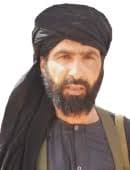Date : 28 Nov 2024
Islamic State in the Greater Sahara (ISGS): history of the terrorist organization
The ISGS (Islamic State in the Greater Sahara) was created in 2015 and is a direct descendant of its “core”, ISIS organization. Its creator Adnan Abu Walid al-Sahrawi, is from the Polisario Front (pro-independence movement operating in Western Sahara). He was one of the leaders of the now disbanded group Al-Mourabitoune, one of the groups part of the JNIM. It was on May 13, 2015 that he pledged allegiance to the Islamic State. This allegiance is not to everyone’s taste, as Mokhtar Belmokhtar, one of his peers, denies this allegiance. Following this disagreement, Adnan Abou Walid al-Sahraoui seceded and named his group “Islamic State in the Greater Sahara” It was only a year later, on October 30, 2016, that the “central leadership” of the Islamic State officially recognized this allegiance.
History of ISGS and its members

The group’s first leader and founder was the late Adnan Abu Walid al-Sahrawi. Although he was announced dead in a strike by Barkhane in August 2021, this information has never been denied. His real name was Lahbib Abdi Said, and he was born in the 1970s in Western Sahara. He was an activist in the Polisario Front. He was a “veteran of the jihad” according to the author and journalist specializing in jihadism in the Sahel, Wassim Nasr. He has extensive experience in guerrilla warfare and is used to asymmetric conflicts.
Following his struggle within the Polisario Front, he joined the ranks of MUJAO in 2010 (Movement for Unity and Jihad in West Africa) which was part of the ranks of Al-Qaeda in the Islamic Maghreb. He eventually joined Al-Mourabitoune which was led by Mokhtar Belmokhtar. Over time, he rose to the highest levels of command and took advantage of his status to challenge Mokhtar Belmokhtar by pledging allegiance to the Islamic State on his own. His death was a major blow to the terrorist organization.
On October 28, 2021 his successor was announced: Abdul Bara al-Sahrawi. There is few information about him. Some say he is Libyan, born in the Western Sahara, while others say he is a foreign fighter based in Libya. This appointment raises many questions: indeed, he is little known in the organization and was not among the individuals approached to succeed Adnan Abu Walid al-Sahrawi. According to some sources, the central leadership of the Islamic State wanted to put an Arab at the head of the group, but this would create inter-ethnic tensions within the group.
Area of influence of this terrorist organization
The group’s main area of operation is in the tri-border area between Niger, Mali and Burkina Faso. It has reportedly expressed a desire to move south to Benin, Togo, or Ivory Coast. This area is a major asset, it allows access to each country despite the borders. Facilitating their various traffics, the three borders become a vital point for their actions.
The conflicts of the Islamic State in the Greater Sahara
The deaths of Adnan Abu Walid al-Sahrawi and local ISGS leaders were major blows to the group. The ISGS has since been in a rebuilding phase in order to continue its operations. Its unity has been severely affected by the arrival of a foreign leader from the central leadership. The Fulani may feel aggrieved if this proves to be true and cause a wave of defection in their already thinning ranks. Moreover, national and international forces are not the only enemies for the jihadist group. Indeed, there is a major and violent conflict between them and JNIM, which makes rebuilding their organization even more difficult.